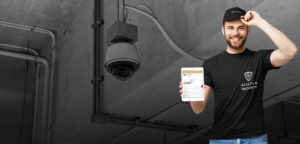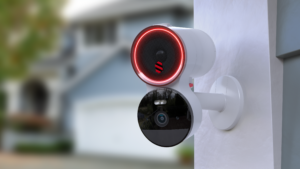The Ultimate Guide for Fiber Optic Cable Installation
If you plan to install fiber optic cable, you need to know what to expect and how to do it. Optical fibers are fragile, but they are reliable and easy to install.
Network Installers can conduct a site survey and recommend the most appropriate cable length for your needs.
Optical fibers are thin
Optical fiber is an extremely thin material used in fiber optic cable installation. Its strands are more delicate than human hair.
Optical fibers are made of a material called glass. They are curved to take light signals in curved paths.
During Fiber Optic installation, these fibers are protected from scratches and moisture. A hermetic plastic coating is applied when it comes off the drawing tower to protect the fiber. The coating also protects the fiber from the environment and the pulling tension that comes with installation.
Optical fibers are available in several types.
Single-mode thread is the smallest and has a very thin core. Single-mode fibers travel down one axis with little pulse dispersion. They can carry information over long distances (over 100 kilometers).
Multimode fibers are larger and can travel in different paths. Multimode fibers are typically used for connecting computer networks.
They transmit light
Fiber Optic cables are used to transmit light signals and data. They have multiple benefits, including speed, security, and reliability.
These cables transmit light instead of electricity, so they’re unaffected by temperature or other environmental factors.
They’re much less likely to catch fire than copper wire cables. These cables are available in simplex and multimode configurations.
Multimode fiber optic cables are best suited for short-range data transmission. Multimode fiber optic cable contains different angles of light.
The digital pulses feed through the cable in a non-detected fashion, which means that some light rays travel directly while others bounce off the cladding.
This results in different groups of light arriving at the receiving point in a separate order.
History
Fiber Optic cables were developed in the 1950s for use in endoscopes, which help doctors see inside the human body without major surgery.
Later, telephone engineers adopted this technology to transmit telephone calls. Fiber optic cables transmit signals and information at nearly the speed of light.
They are easy to install
There are many benefits to these cables. First, they are easy to install. Unlike wire cables, fiber optic cables don’t need special installation equipment, such as a surge protector or a grounding system.
Additionally, they don’t suffer signal loss or interference, meaning data transfer speeds will remain high.
Next, you’ll need to install the fiber terminals. Unlike phone jacks or coax, fiber terminals are much more significant. They can be the size of a juice box or a briefcase.
You’ll want to install them in a location with few obstructions. For instance, you want to install them in the garage only if you have the right tools. Make sure to wear protective eyewear when installing them.
Another benefit of fiber optic cables is that they are easier to install than copper wires. Since the wires are much thinner than copper, they can be installed easily.
Additionally, since these cables do not contain electricity, they are safer to work around. They’re also much easier to install and promote more airflow in rack enclosures.
They are reliable
Fiber Optic Cables are the most reliable type of internet cable available today. Unlike conventional copper wires, which are vulnerable to hazards, these cables have virtually no attenuation.
This means no data loss and no need to worry about the reliability of your service. Data is carried on these cables in the form of light, which travels at breakneck speeds.
Another reason fiber optic cables are preferred over copper cables is their low weight. This makes them ideal for transportation and installation, including on aircraft.
Proper Installation is Important
One of the most common causes of Fiber Optic cable malfunctioning is improper installation. The connectors between the fibers play a significant role in the efficiency of the cable.
You can also check the connection using a bright flashlight or laser pointer.
Excessive bending and flexing of the fiber optic cable can also cause it to lose signal. It can also be damaged if it is too long.
Also, improper connectors or faulty splices can severely degrade the signal. Too many connectors can cause even more signal loss.
Other causes of Fiber Optic cable to fail include improper field termination, air gaps, and defects on the connector end face. In addition, fibers can be damaged by chemicals or radiation.
They require planning
Before you install fiber optic cable, you must carefully plan your installation route. It’s essential to plan the path of the cable so that it will be stable with minimal attenuation.
When installing fiber optic cable, you should prepare a blueprint for the installation area. You must also note any devices you wish to connect to the fiber cable.
Conclusion
Hence, it is crucial to hire experienced and knowledgeable experts in the field. Don’t worry; AZ CCTV can do it right for you.
AZ CCTV offers the best fiber optics services in Arizona.
- Keywords: Fiber Optic Services, Fiber Optic Systems





